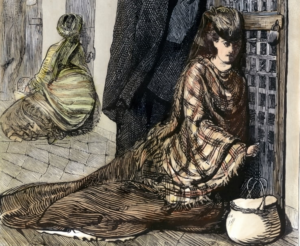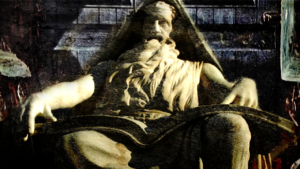Medusa is not the victim
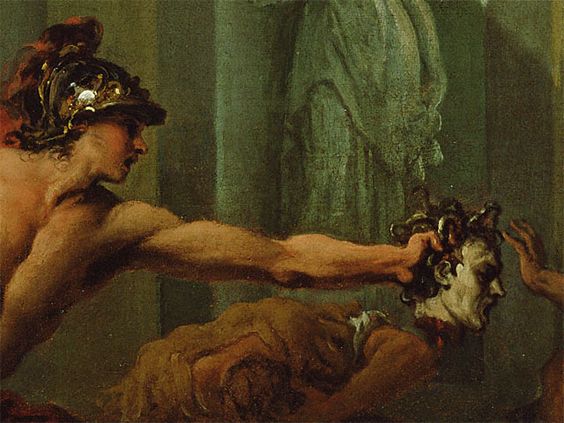
An analysis of the myth under the classical molds, by Victória Dedini Schmidt.
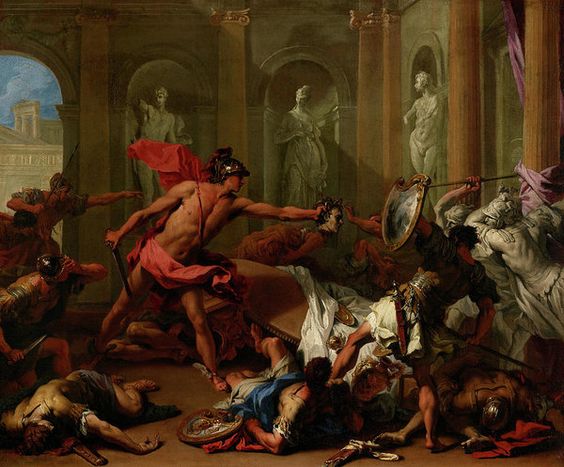
The dissemination of Greek Mythology and in particular the tale of Medusa has brought about several poor interpretations, in desperate need of a more rigorous study of Mythography. It is necessary to understand how the symbology of a narration works before examining it, and always by starting from the following two points: Myths must not be interpreted literally, and the Gods are essentially good and cannot be dissociated from the Good. As Homer says: “Mortals blame the Gods of evils that happen to them, when only they, men, by their own madness and against the will of destiny, are its authors.” Therefore, why would a poet, a servant of the Muses, call Mercury a liar or a thief? Why would a God be represented with human vices?
Sallustius (an excellent Neoplatonist mythographer) in his work On the Gods and the cosmos explains:
“[…]But you will ask why adulteries, thefts, paternal bonds, and other unworthy actions are celebrated in fables? Nor is this unworthy of admiration, that where there is an apparent absurdity, the soul immediately conceiving these discourses to be concealments, may understand that the truth which they contain is to be involved in profound and occult silence? […]
Of fables, some are theological, others physical, others animalistic, (or belonging to soul,) others material, and lastly, others mixed from these. Fables are theological which employ nothing corporeal, but speculate the very essences of the gods; such as the fable which asserts that Saturn devoured his children: for it obscurely intimates the nature of an intellectual god, since every intellect returns into itself. But we speculate fables physically when we speak concerning the energies of the gods about the world; as when considering Saturn the same as Time, and calling the parts of time the children of the universe, we assert that the children are devoured by their parents. But we employ fables in an animalistic mode when we contemplate the energies of the soul; because the intellections of our souls, though by a discursive energy they proceed into other things, yet abide in their parents.”
Sallustius’ explanation of the material myth should be kept kept in somewhat doubtful regard, because Sallustius, despite being an illustrious writer, did not understand the Egyptians well – Iamblichus and Plutarch were superior at explaining them.
When a myth refers to the gods as thieves, or adulterers, or accuses them of various passions, keep in mind those words have human and not divine application. The lie exists in contrast to the truth, but not everything that men call the truth is the truth in fact, or remains true at a higher realm. A king can establish an unjust law and say that it is the divine will, that it is the Truth in fact. If Mercury is the lying god, he is the God who shows how human truths are lies. He is the symbol of lying, because it leads to the real truth, just as he was also the intercessor of outlaws and outcasts, invoked by the wronged.
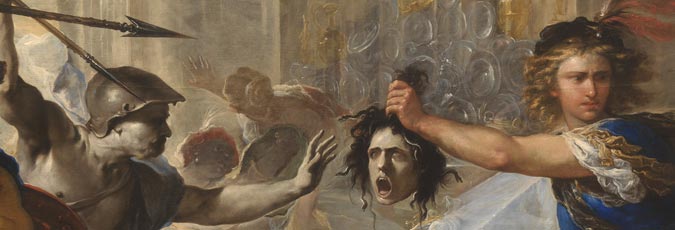
Without understanding the science of myth, the reader starts to hate a God for something that is attributed to him poetically, through the misunderstanding of literal interpretation. In the first version of the Medusa myth Greek poet Hesiod makes it evident in his Theogony that the act was consensual: “Poseidon, the one with the dark hair, lay with Medusa in the soft meadow among spring flowers”. However, Ovid, a Roman poet, writes in his work Metamorphoses that “Medusa was violated in the sanctuary of Minerva (Athena) by the Lord of the Sea (Poseidon). Jove’s daughter (Zeus) turned her back and covered her virgin’s eyes with a shield. As a punishment, she had her adorable hair turned into disgusting snakes.”
Ovid’s alteration was not a mistake since the writer was aware of the Orphic tradition, as mentioned, and the addition of the violent character to the narrative as symbolic, and not literal.
Poseidon is not only the God of the Seas, but is part of the Demiurgic trinity, the three individual aspects of Zeus – Celestial Zeus (Zeus Father) ruler of the Inerratic Sphere, Marine Zeus (Poseidon) ruler of the Planetary Spheres, and Underground Zeus (Hades) ruler of the Sublunar Region. His role as God of the Seas is linked to the role of destructive dilution. He is also the God of earthquakes and ruler of Astrology, because on the seas there is no reference to space, and tracking the movements of planetary spheres is essential for location.
Ovid adds the violent character to Poseidon due to his nature of dilution, he is the destructive and fateful force that takes Medusa (the material beauty), resulting in the withdrawal of Wisdom (Athena). The word Medusa means Guardian, the one who keeps a mystery, and Athena, the Goddess of Truth, exposes Medusa’s hubris, transforming her into a Gorgon. The monster is the inner nature, vanity, the essential lie. Distanced from Wisdom, Medusa’s hubris is a vanity that rejects guilt – impossible to discern as guilt is vainly repressed, which petrifies and paralyzes life.
Perseus turns to the Gods to stop Medusa, and from Athena the hero receives the mirrored shield that symbolizes Reason, symbol of the Phantastikon, that which reminds the “I” that the sense reality is a reflection of the intelligible. Through the mirror of reason, man looks at material reality without being petrified by vanity and guilt. It contemplates its interior and sees matter as it really is. That is, a mere receptacle that reflects superior beauty.
From the god Hephaestus Perseus receives a scythe that symbolizes the Will, and from Hermes he receives Agility to perform the task. From the decapitated head comes the horse Pegasus – the creative imagination. Reason allows the mind to be free to repress guilt, allowing the admiration of material beauty without becoming obsessed or petrified. The mind becomes able to create, that’s why Pegasus reappears in another myth (with the hero Bellerophon) to defeat the monster Chimera that symbolizes the misused imagination, the Lie.
After thus examining the Medusa myth it is normal that there remain questions and even occasionally disapproval from the modern reader, particularly regarding Ovid’s use of the allegory of rape. Our contemporary society, founded on Christian virtues but with superficial knowledge of mythography, is not able to extract the correct symbology from the fictional types. Plato predicted this when he showed concern about portraying the Gods as jealous, vindictive or adulterous, elements which have been criticized since Heraclitus and Xenophanes. The public cannot understand the Myths the way Priests and Philosophers can. An ordinary man listening to Homer will believe that the Gods can be bribed. To repeat Salustius’s genius, in the same work: “Informing the truth about the Gods produces disdain in fools, due to their inability to learn, and neglect in scholars; but hiding the truth in myths prevents the disdain of the former, and compels the last to philosophize.”
Poets use enigmas and therefore their texts should not be used as verbatim guidelines for morality. For this reason, he criticized the use of myths, the muthoi, for the education of children, as they still cannot distinguish fact from fiction. The first stories a child should hear are those that encourage virtue of the highest order. For this reason Plato believed myths must be reformed to avoid the misrepresentation of the true nature of Gods and heroes. Only when they reached adulthood would educated young people be able to hear the original muthoi with the right understanding. In short, the poet should be managed at the service of a spiritual and moral education, and presented according to the ability of the target audience to understand. That is, with complexity for Priests and Philosophers who can grasp bigger truths, and in a simplified objective way for young people and teenagers, in order to provide a clear foundation.
Modernity chose to move away from classical education, and we rejected the study of symbology, and taking poetic allegories as literal, myths were trivialized and used to reaffirm ideological positions. Gods and heroes have been reduced to slurs like “sexist” and monsters are praised in their place. The recent acclaimed creation of a statue of Medusa holding the head of Perseus (in a feminist turn-around) represents the current state of the modern mentality, and polar opposite of the myth’s purpose: vanity triumphing over reason, petrified in its repressed guilt.











